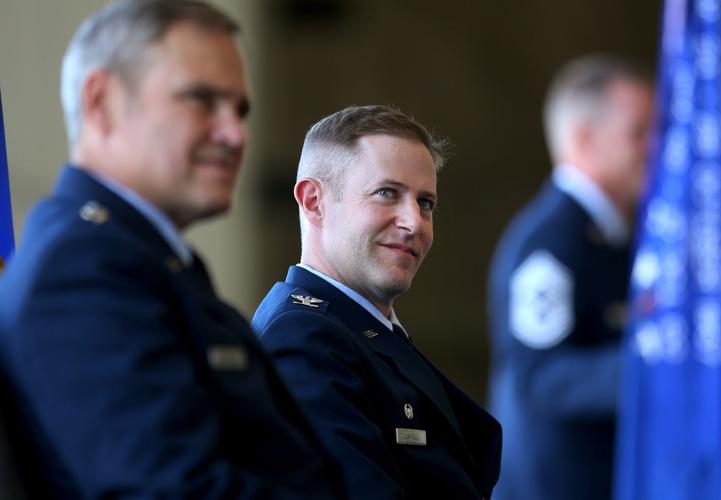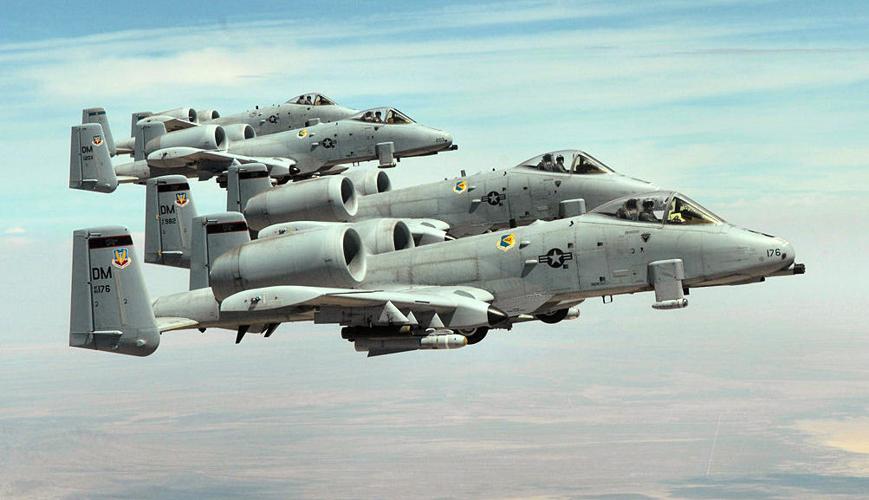Preparing Davis-Monthan Air Force Base for a future that may soon begin to come into focus is the top priority of its new commander.
Col. Scott C. Campbell, who was installed as commander of D-M’s host 355th Fighter Wing last month for an expected two-year post, says decisions on new missions at the base could start coming by this winter, when the Pentagon is expected to narrow its list of sites for expanded Air Force drone operations.
The future of D-M has been clouded in recent years by the Air Force’s budget-cutting plan to retire the nation’s entire fleet of A-10 Thunderbolt II ground-attack jets — D-M’s biggest mission.
But Congress has blocked the A-10 retirement process, and with the A-10 in demand in the ongoing fight against Islamic State militants, the Air Force has recently said it would push the final retirement date out three years to 2022, or perhaps longer.
Meanwhile, D-M is in the running as a potential sites for a new drone squadron, F-16 fighter training units and a Reserve squadron of F-35 Joint Strike Fighters, the Air Force has been saying since late last year.
“All that is positive, and my No. 1 priority right now, in my two years, is trying to posture the base strategically for our future mission, because a lot of those decisions are going to be made while I’m here,” Campbell said. “In the short run, I think you’re going to see additive capacity here, additive missions, an increase in missions.”
While the Air Force plans to narrow its candidates for the drone base to two this winter, decisions on where to base F-16 and F-35 fighters are further out, though they are inextricably linked.
In August, the Air Force issued a list of 34 bases around the country — including D-M and the Air Guard 162nd Wing at Tucson International Airport — that could be assigned F-16 training units relocated from Luke Air Force Base near Phoenix and from Hill Air Force Base in Utah. The F-16s are being moved to make room for new F-35 fighters and to address pilot shortages.
Though F-16s periodically fly from D-M during training, the only F-16s based there are a few Air Guard F-16s on homeland-security alert duty.
Decisions on moving the F-16s are expected sometime next year, as Hill’s F-16s are expected to be moved by the end of 2018. The 162nd Wing — the Air Guard’s biggest fighter wing and the primary site for training of foreign F-16 pilots — also is on a list of four bases that could get more F-16s by the fall of 2017, under an interim plan to quickly address the shortage of pilots.
“It’s all interrelated with the F-35, F-16s, there’s a lot of moving parts,” Campbell said. “But Hill has 45 F-16s that they’ve got to move somewhere, and the Air Force doesn’t want to just bring them down here and put them in the boneyard, because they have a requirement to increase capacity so they want to stand up additional training units.”
Davis-Monthan is among four sites under consideration to host an Air Force Reserve F-35A fighter squadron by 2023, the Air Force announced in April.
Any decision to base new types of planes at D-M would require specific studies of their environmental impacts, including noise and health issues.
But that process would likely be quicker for the proposed drone mission, Campbell said, because D-M is being considered only for a ground-based “mission control element,” since the base is not approved for drone takeoffs and landings.
D-M may have a leg up on the other candidate bases because it already has a drone, or “remotely piloted aircraft,” unit on base.
The Air Guard’s 214th Reconnaissance Squadron, established at D-M in 2007, employs pilots and sensor operators who remotely operate MQ-1 Predator drones overseas. In 2014, the unit added a hangar at Fort Huachuca in Sierra Vista to visually practice launches and landings at the drone-certified Libby Army Airfield.
“I think we’re uniquely postured in a positive way for that mission set, because the mission is already going on here, and we’ve got infrastructure for them to fall in on,” Campbell said.
The 214th already is transitioning to the larger, heavier and more capable MQ-9 Reaper.
D-M expects a site visit next week from Air Force inspectors who will score the base for its capacity and suitability for the drone mission, Campbell said.
The other bases on the short list for the new Reaper unit — Moody Air Force Base in Georgia, Mountain Home Air Force Base in Idaho, Nebraska’s Offutt Air Force Base and Shaw Air Force Base in South Carolina — have no current unmanned aircraft operations.
Tucson’s reputation as a military-friendly community and the area’s recreational and cultural offerings also make it attractive, as the Air Force struggles to enlist and train more drone pilots amid low morale blamed on stress and overworking, Campbell said.
“What Tucson has to offer and the support we get from the community probably beats a lot of those bases,” he said.
Campbell said he believes most airmen feel great support from the Tucson community and local elected officials, adding that he still gets the “small-town feeling” he felt when he arrived in the Old Pueblo as a student nearly 20 years ago.
He acknowledged that not everyone is thrilled with living near a busy Air Force base.
A vocal group of neighborhood activists routinely complain about noise from D-M flights and cite safety and health concerns about jet operations over Tucson neighborhoods, opposing the basing of F-16s or F-35s at D-M for those reasons.
The Air Force also is defendant in a pending federal lawsuit filed by several residents in D-M’s flight paths to block a plan to expand training by visiting pilots by some 65 percent.
The plaintiffs contend the Air Force acted illegally last year when it found the proposed expansion of its Total Force Training program would have no significant environmental impact on the community. They say the plan would bring louder planes and pose significant health and safety risks.
Campbell said he could not discuss the pending lawsuit.
He said he’s always willing to listen to residents’ concerns and strive to mitigate any potential impacts on the base’s neighbors.
“In the end, it’s about open communications and transparency, so long as those communications channels are there and we have an open dialogue about it, I’m happy to engage,” he said.
But Campbell said he believes those who complain about base operations represent a minority of residents, and he’s more focused on his duty as commander.
“It’s a balance. I have a very clear mandate which is to produce combat power and agile combat support, which requires intense training,” he said. “So I will never put lives at risk in order to make less noise, for example. I have to be able to send our airmen out the door with the proper training and the proper capability, to not put them at risk. In the end, I’ll look at it through that lens.”
Meanwhile, Campbell said he’s still focused on training A-10 pilots to meet demand, even as the “Warthog” faces eventual retirement.
“My current task is to produce more A-10 pilots, which is an interesting dichotomy,” he said. “As far as I’m concerned, we’re moving forward, we’re going to continue to do that business until I hear otherwise.”





